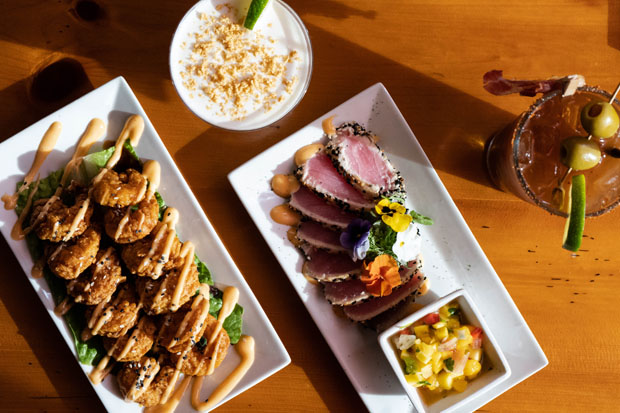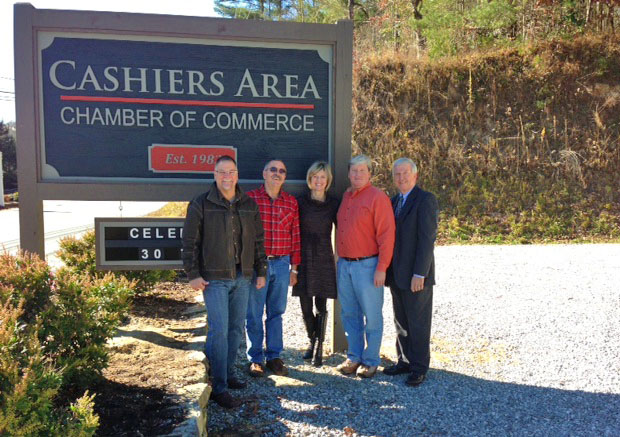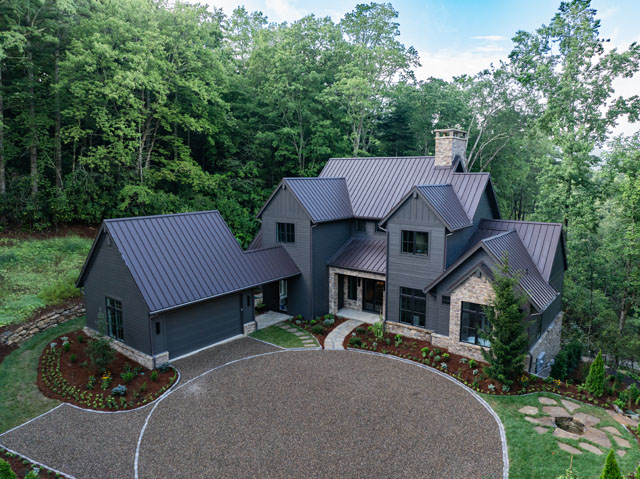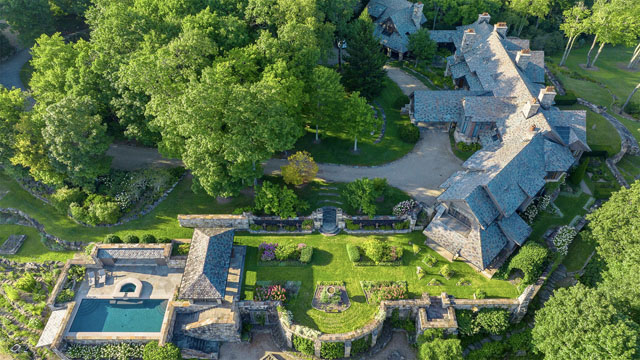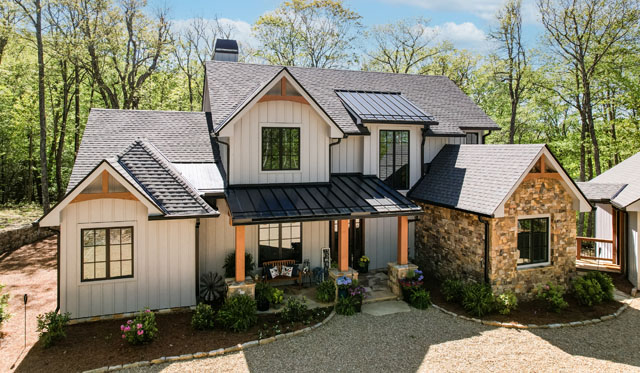Native Abundance
05 Apr 2023
A hopeful gardener expounds on the gift and importance of indigenous plants
Story and Photos by Kristin E. Landfield
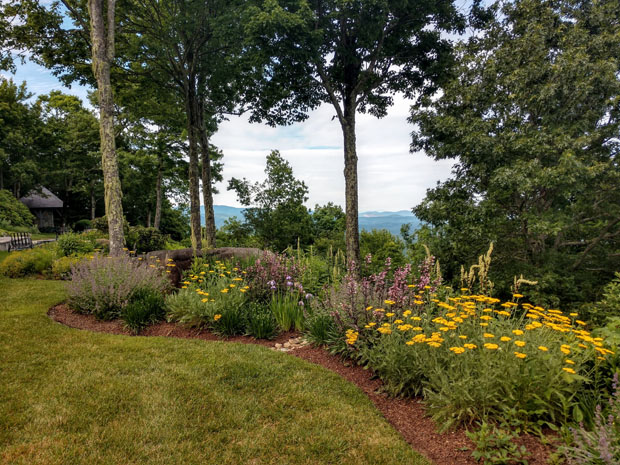
Spring’s spontaneity is in full force here on the plateau. Fresh tender green claims the overstory and the understory—it’s April’s willful protagonist, seizing all the spaces in between. The lush vegetation that is the hallmark of this region brims from the roadsides and drips lavishly from spring-fed crevices. This vast community of indigenous plants ignites the full cycle of our ecosystem. Plants transform sunlight to sugar and nectar to butterflies. They filter oxygen to cold water creeks where newly hatched brook trout prepare for their upstream migration.
For anyone gardening in the last 15 years, it’s become impossible to miss the growing attention placed on native plants and their critical role in developed landscapes. The incontrovertible message is this: the responsible action is to plant more native plants. In Western North Carolina, gardening with native plants can be a joyful exploration into the richness of the region, rather than merely fulfilling a responsible duty. The southern Appalachians sustain one of the most biodiverse ecosystems on the planet, and there are few places where the local flora comprise such a lavish spread of diverse species.
I consider myself a sincere native plant enthusiast, as well as someone who finds more solace in the natural world than anywhere else. Yet I have a confession to make: I still sometimes feel a little blip in my blood pressure when conversations about native plants arise. I can only attribute this to some vestigial shame I carry for not being a purist, defensive to those who are quick to moralize around native plants and give an air of contempt to we who are less rigid in our palette of plants. In many ways, though, purists do walk the high ground. Plant selection has become an ethical issue, as what we do in our home and public gardens is perhaps the most tangible means by which we can act as responsible stewards of this incredible beauty. So I’m in agreement—we ought to plant natives. Today, though, I’d like to step away from argument and moralizing, the “shoulds” and “shouldn’ts” and feeling guilty for my amor toward a boxwood or a foxglove. Instead, I’d like to talk about love and abundance, and how this generous bounty of native plants touches every aspect of our lives.
When I was 19, I read Dostoevsky’s masterpiece novel The Brothers Karamazov for the first time. The book pierced me deeply, a 19th century Russian masterpiece on the human condition. All these years later, in 2023, as I contemplate what it means to garden responsibly, a seminal passage keeps coming to mind: “All is like an ocean, all flows and connects; touch it in one place and it echoes at the other end of the world... Love all of God’s creation, both the whole of it and every grain of sand. Love every leaf, every ray of God’s light. Love the animals, love plants, love each thing. If you love each thing, you will perceive mystery in all things.” I’m heartened by this reality—in being a member of an interdependent community who must act with tenderness and care. Profound mystery abides in the most familiar natural rhythms.
About a year and a half ago, I made a careless error: I didn’t pay close attention at the end of a tree removal/pruning project. A couple of old growth trees were cut. I couldn’t put them back. These trees supported a teeming body of life in a very sensitive spot near Highlands Biological Station. A highly threatened species of salamander was known to remain in that area, yet without shade from trees, harsh sunlight on the adjacent slopes and creeks makes it uninhabitable for that blameless creature. My point is this: quick carelessness on a busy morning impacted not just the magnificent 300-year-old poplar, but all the creatures depending on it for life. Those falling trees reverberated with an impact I can’t calculate. It’s all an ocean. Everything is connected.
There is a false dichotomy at the heart of modern issues in ecology that cuts through who we are as gardeners, and most essentially, through who we are as humans. We in the West generally see ourselves as distinct from nature. Late medieval and Enlightenment era philosophers were the first to define humans as separate from the natural order. Descartes said, “I think, therefore I am” and in so claiming, he created a duality between we thinking humans and every other organism on earth. As such, Nature is “out there” and we are “other.” The fact, however, is that nothing is distinct. We, too, are bobbing in the same interconnected ocean of biology as every other cell-bearing organism on the planet. We share the same carbon, hydrogen, oxygen, and sunlight as the amazing populations of salamanders here in Western North Carolina, the same complex matrix of soil minerals as rare carnivorous plants, and the same social network as the noisy songbirds who mix spring’s early morning soundtrack. What an honor.
Botanical life holds untold mysteries of the universe. Plants are the powerhouses for the full cycle of organic systems. They moderate temperature and moisture, they preserve the ground underfoot, and they are a prime food source for nearly all fauna and symbiotically, for one another. If you like the songs of the Carolina wren, then you are a native plant enthusiast. If you like our crisp air and refreshing morning dew or enjoy the black bears who get up to dumpster hijinks in downtown Highlands, then you are a native plant enthusiast. In fact, you must love insects. Everything is connected.
Insects are the unsung heroes of each ecosystem and persuasive envoys for gardening with native plants. Lepidoptera transfer huge reserves of energy from plants to animals. Yet nearly all insects are food specialists, meaning they co-evolved with endemic flora to ingest specific plants. When these plants are eliminated, mostly through human appropriation of wild land, their particular food sources diminish dramatically. They become locked on small islands of nature, between which are vast areas with little to no food that can support that species. Even if there appears to be an abundance of plants and flowers in such landscaped areas, chances are local insects and other animals can’t consume their foreign nectar or leaves. Nor do non-native plants forge the same synergetic relationship with microbes in the soil, invisible yet essential components for a healthy system.
We are fortunate that this plateau doesn’t yet face the extreme crisis so many places now encounter. Still, the explosive growth in the region is shifting the ecological scales away from our wild spaces. Even in these luxurious mountains, we no longer have the luxury of treating our home gardens as distinct from nature. A garden, even a purely native garden, by definition is not nature. It’s cultivated; we as gardeners intervene. However, the inhabitants of the garden, all conductors of the carbon cycle, are members of the natural order—including us. We get to be integral members of this abundant ecology. When we choose an exquisite native Lobelia over Asiatic Lilies, our own landscapes become vital corridors that connect isolated natural spaces.
Many gardeners, including myself, see poor examples of native plant gardens that frankly look like a messy pile of plants. These ineffective spaces, often sad and eroding swaths of mulch, can get my hackles up. Poor design doesn’t have to be the standard for native plantings. The most beautifully designed gardens are ones that interpret and amplify the romantic aspects of the natural landscape. Native plants do not have a style, per se. They can embody whatever design motif a knowledgeable landscape designer constructs, even a very formal and tidy scheme. The southern Appalachians offer an abundant palette of beautiful plants with which to design extraordinary landscapes. We can become ambassadors on the grounds of aesthetics, as most well-designed gardens that incorporate a native plant palette carry a beautiful harmony and ease that augments the aesthetic appeal of the space.
Paige Englebrekkson, education specialist at Highlands Biological Station offered this: “By using native plants around our houses, we can make our landscaping into homes for wildlife, too. Exotic plants don't offer the same suitable leaves for native caterpillars, seeds for migrating birds, or flowers for declining pollinators... In comparison, our animals have long histories with our native plants…The native plants that offer me so much beauty are also providing food and shelter for the many other creatures who call my corner of the mountains home.”
As a hopeful gardener, I hold a subtle yet deeply important role in this magnificent landscape. I’m part of nature, a member of a precious community with an extravagant palette of indigenous plants to celebrate. By choosing plants that allow my fellow species to thrive, I nurture the same mysterious abundance that feeds my own body and my soul.

